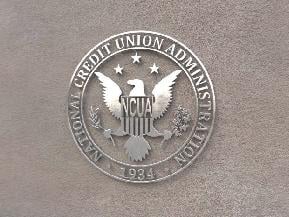LAKE MARY, Fla. – Navy Federal Credit Union is now offering its 2.3 million members some of the key steps needed to fully automate the mortgage closing process. The nearly $20 billion CU is deploying the UniFi PRO Mortgage loan-origination system from Fiserv Lending Solutions. The system includes automated document preparation and delivery for electronic-signature enabled closings. Fiserv sees the announcement as another milestone on the road toward full automation of the complex closing process, while a consultant specializing in technology and business processes at financial institutions says the know-how is there, and that it’s now really a matter of demand on the part of consumers and the desire of the companies serving them to implement it. Fiserv Lending Solutions plans to roll the functionality out to all its users in the first quarter of 2004. Navy Federal originated nearly $5.1 billion in mortgage and home equity loans in the first eight months of 2003, the most in the credit union’s industry. “We expect to reduce the overall cost to process a loan – from application to delivery to an investor – by more than $230 per loan; and we plan to use the savings to further improve our productivity and pricing,” says Karen Pearson, assistant vice president of automated mortgage systems for Virginia-based Navy Federal. John Tenuta, president of Lake Mary-based Fiserv Lending Solutions, says the Fiserv-Navy Federal launch “takes us one step closer to realizing the industry’s vision of the fully electronic mortgage.” How close? “On a prototype basis, technology vendors certainly have all the tools today to close an electronic mortgage,” says Steve Williams of Cornerstone Advisors in Scottsdale, Ariz. “The challenge really lies more in the direction and behavior of consumers and various companies in the mortgage food chain,” says Williams, who consults on strategic and technology planning and performance issues at credit unions and banks. “I think the ultimate bottleneck in electronic mortgage closings will be the consumer and some title companies, not the technology,” Williams says. “We may start to see closings on more simple home equity, auto and unsecured consumer loans before the more complex mortgage,” he says. “To move into a fully electronic mortgage world, we will need to see this vision become a priority with financial institutions, as well as title, appraisal, mortgage insurance and other related companies.” “We operate under the credo, `We Serve Where You Serve,’ and by implementing e-mortgages, we can now electronically sign and close mortgage loans in every state and even on board a ship,” Pearson says. The UniFi PRO Mortgage solution uses Internet-enabled browser screens and XML files to prepare and exchange data in various formats between disparate systems and far-flung locations, data that include closing documents and alerts that notify loan officers and settlement agents when various steps have been completed in the complex process of closing a home loan. The process also saves on labor and reduces mistakes, since manual data entry is greatly reduced or eliminated throughout the loan process. “Integrated data sharing is helping us reinvent our business processes,” Pearson says. “The immediate electronic exchange of data and documents enables us to respond quickly to changes at the closing table; and it keeps UniFi PRO Mortgage in sync with how the loan actually closed. We don’t have to worry about `pen-and-ink’ changes that are not reflected in the system.” Speaking of the secondary market, the new Navy Federal system meets the requirements for electronic mortgages formally adopted by Fannie Mae in June 2002. Meanwhile, Williams, the Cornerstone Advisors consultant, says, “I wouldn’t say Fiserv is furthest along, but they have been wise in linking with a very Web-focused company like Dorado (a Fiserv partner in creating its electronic mortgage system) and find a marquee client like Navy to help experiment with these new capabilities. “I would expect to see the new technology slowly roll out within the UniFi client base over the next few years as it matures,” he says. “UniFi is facing competition from many loan-origination vendors, a handful of which are also stressing a newer Web services architecture.” -
 Search
Search














 Copyright © 2024 ALM Global, LLC. All Rights Reserved.
Copyright © 2024 ALM Global, LLC. All Rights Reserved.